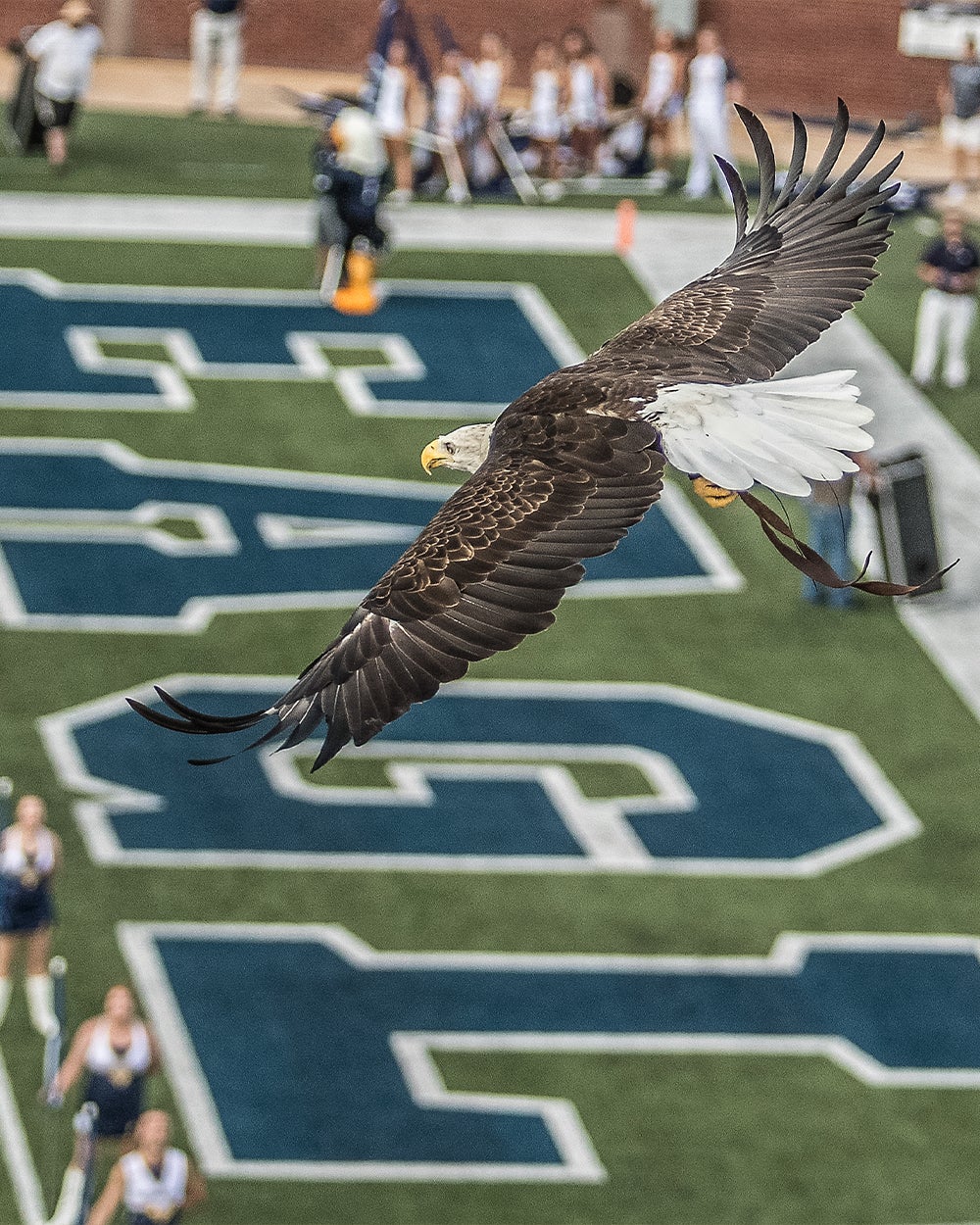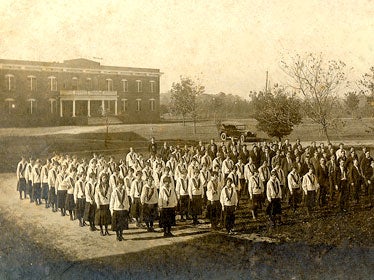On Dec. 1, 1906, a delegation of Statesboro representatives traveled to the DeSoto Hotel in Savannah (site of what is currently the DeSoto Hilton), where they won the bid to establish a school of higher education in Statesboro.
When First District Agricultural & Mechanical School’s inaugural academic year began in 1908, few could have foreseen a major American university growing out of four faculty members and 15 students in just a little more than one lifetime.
Now in its second century of service, Georgia Southern has more than 27,500 students, more than 2,000 faculty and staff, approximately 138 programs of study at the bachelor’s, master’s and doctoral levels, and three vibrant campuses in Statesboro, Savannah and Hinesville.
Statesboro Campus

The Statesboro Campus was founded in 1906 as a school for teaching modern agricultural production techniques and homemaking skills to rural school children. The First District A&M School began within two decades to shift its emphasis to meet the growing need for teachers within the state. Its name and mission were changed in 1924 to Georgia Normal School as a training ground for educators, though it continued to accept “preparatory” or high school students. Five years later in 1929, full-fledged senior college status was granted as South Georgia Teachers College.
Ensuing decades saw additional name and mission changes: to Georgia Teachers College in 1939 and Georgia Southern College in 1959. Continued program and physical expansion, including one seven-year stretch, 1984-91 in which enrollment doubled from just over 6,000 to more than 12,000 students, led to a final transformation in 1990 – to Georgia Southern University.
Armstrong Campus & Liberty Campus

In 1935, Savannah Mayor Thomas Gamble founded the Armstrong Campus — then known as Armstrong Junior College — in order to help stimulate Savannah’s economy and advance opportunities for local youth who could not afford to attend college away from home. The school began with 175 students, and was located in the historic Armstrong House on Bull Street at the northern end of Forsyth Park. In 1966, after receiving four-year status and a 250-acre donation from The Mills B. Lane Foundation and Donald Livingston, Armstrong State College moved to its current location on Abercorn Extension in Savannah’s Southside.
Throughout the next 30 years of growth, Armstrong added graduate programs in business and education, and became a Regional Health Professions Education Center. The institution’s growth culminated in 1996 with university status and a new name: Armstrong Atlantic State University. Just two years later, Armstrong collaborated with Georgia Southern and other USG institutions to create the Liberty Center in Hinesville in order to offer degree programs to the active duty and veteran military and their families in the area. Liberty County is the home of Fort Stewart, the largest military base east of the Mississippi.
Georgia Southern University Now

In 2018, Armstrong State University and Georgia Southern University consolidated, creating an institution that retained the Georgia Southern University name. The institution now encompasses ten colleges on three campuses: the Statesboro Campus, the Armstrong Campus in Savannah and the Liberty Campus in Hinesville.
Just as in the days of First District A&M and Armstrong Junior College, Georgia Southern University eagerly pursues new avenues to meet the challenges of a changing world.
The growing demand for online learning has brought online bachelor’s degrees in business, nursing, and information technology. Master’s programs are offered online in nursing, business, accounting, economics, computer science, coaching, kinesiology, and a broad choice of education fields. A doctoral program in nursing is also available.
Athletic Excellence

Georgia Southern’s athletics programs have a long and storied history, rich with tradition born of hard work and success. The University has not only produced conference and national champions, but has parlayed private support into significantly enhanced facilities — crucial to the recruitment and retention of top athletes.
Intercollegiate athletic success — including six FCS (I-AA) National Championships in football — has had a powerfully positive effect on the University’s public persona and pride of faculty, staff and students. All sports compete at the NCAA’s highest level with football, formerly FCS, joining the FBS ranks in fall 2014.
A Regional Powerhouse
Georgia Southern is now the state’s largest and most comprehensive university south of I-20 and is classified as a Doctoral/Research University by the Carnegie Foundation for the Advancement of Teaching. Emphasis on serving returning veterans has repeatedly earned the University a “military-friendly” designation by Victory Media, publisher of G.I. Jobs, STEM Jobs and Military Spouse magazines. Other accolades include Kiplinger’s “Top 100 Best Value,” and Forbes magazine named the University among America’s Best Midsize Employers.
It is an exciting time to be a part of Eagle Nation! We are forging our institution on the foundation of two dynamic, historic schools of higher learning. We are focused on student success. We are focused on hands-on learning. We are focused on close connections with faculty and students, and we are here because we want to make an impact on our communities, our region and our state.

